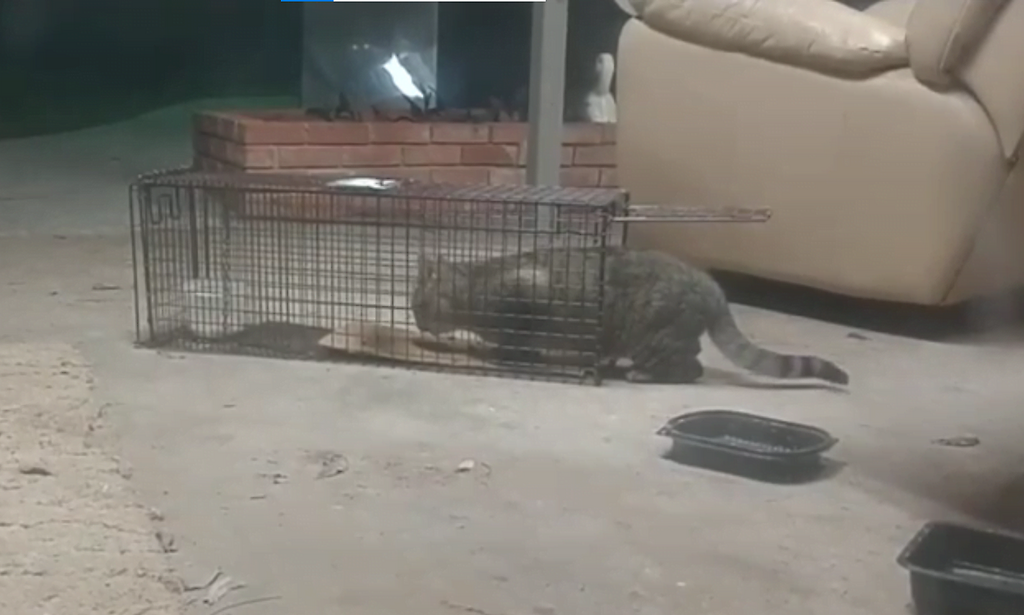How to trap stray cats

Do Not Get Close
One of the most successful methods for keeping stray and feral cat populations down, is to use a system that sees them being trapped, neutered, and then released again, hopefully to a new owner that will take better care of it.
This does of course mean that the cat will need to be trapped first, and if you’ve ever tried to trap ANY animal that doesn’t want to be trapped, you’ll understand how difficult the task is. On top of that, these felines have sharp claws that will scratch your skin to shreds, and some rather sharp teeth that they’ll sink into your flesh without a moment’s notice. Then you run the risk of these felines passing on dangerous diseases, and if that cat is a feral one, or a stray from irresponsible owners, you’re also running the risk of spreading rabies. This is a deadly virus, and treatment must be administered BEFORE the point at which symptoms arise. Sadly, many people are unaware that their pets have become infected prior to these symptoms arising. With early symptoms looking very much like the flu virus, most humans often ignore those early warning signs too.
In short, getting too close to a stray cat (or a feral cat) is a very bad idea. There are too many uncertainties, and preventing the spread of rabies should most definitely be your number one priority.
Traps to Use
There are a number of traps on the market that you can use if you do want to follow the successful method of trapping, neutering and then releasing the animal into a loving home. Havahart traps have long since been known as one of the dominant names in the trap industry, but you will need to ensure that you get the right kind of cage, and also the right size cage too. If it’s too small, there's a good chance the cat won’t go anywhere near it. If it is too big, on the other hand, the cat has far too much room to play around with. This means that it can easily throw itself around the cage and potentially injure itself. You will also need to take into consideration that you could potentially trap other animals. This complicates things even further because you could trap an animal that you are not allowed to release into the wild, such as raccoons. Because of the rabies risk, once again, certain wild critters cannot be released into the wild. You will need to check the particular laws in your state before taking any action.
Cats are quite cagey around cages … Excuse the pun. It’s going to take a really tasty bait to encourage them to take a closer look, and even then, unless the traps are in the perfect position, with the perfect bait, checked regularly, in all the best conditions, you could wait for weeks without any captures. Trapping animals is very difficult, and that's why so many people call in the professionals.
After Trapping
An old blanket, pillowcase, duvet cover, or even table cloth can be used to bundle up a scared cat that has been backed into a corner, but you should still remember that there is a very great chance the feline will lash out. They certainly won’t be happy about being backed into a corner, and this will be even more so the case when you're dealing with a feral cat, rather than a stray. A stray cat is one that has run away from home essentially, or has been abandoned by an irresponsible owner. A feral cat, on the other hand, will have been born in the wild from a stray mother or father. They will have mated with either another stray or feral feline, or a domesticated animal, and had their youngsters in the wild. These feral animals will have very little, if at all, contact with humans, and this means they are all the more difficult to trap and/or approach.
If the stray or feral feline is particularly hungry or sick, there’s a chance you might be able to encourage it into a carrier with some patience, but we must admit that this rarely happens.
If the stray cat is in your home, we would recommend opening the back door or a window, shutting the cat into one room, and leaving it alone for a wild. You can try to shoo it out, but what usually happens is that you end up chasing the cat around the room for a while and a bunch of stuff gets broken.
If all else fails, call in the professionals. Some city or county services will help with stray and feral cats, and wildlife removal and control experts will be able to not just remove the animal, but educate you on how to stop the problem happening again.
